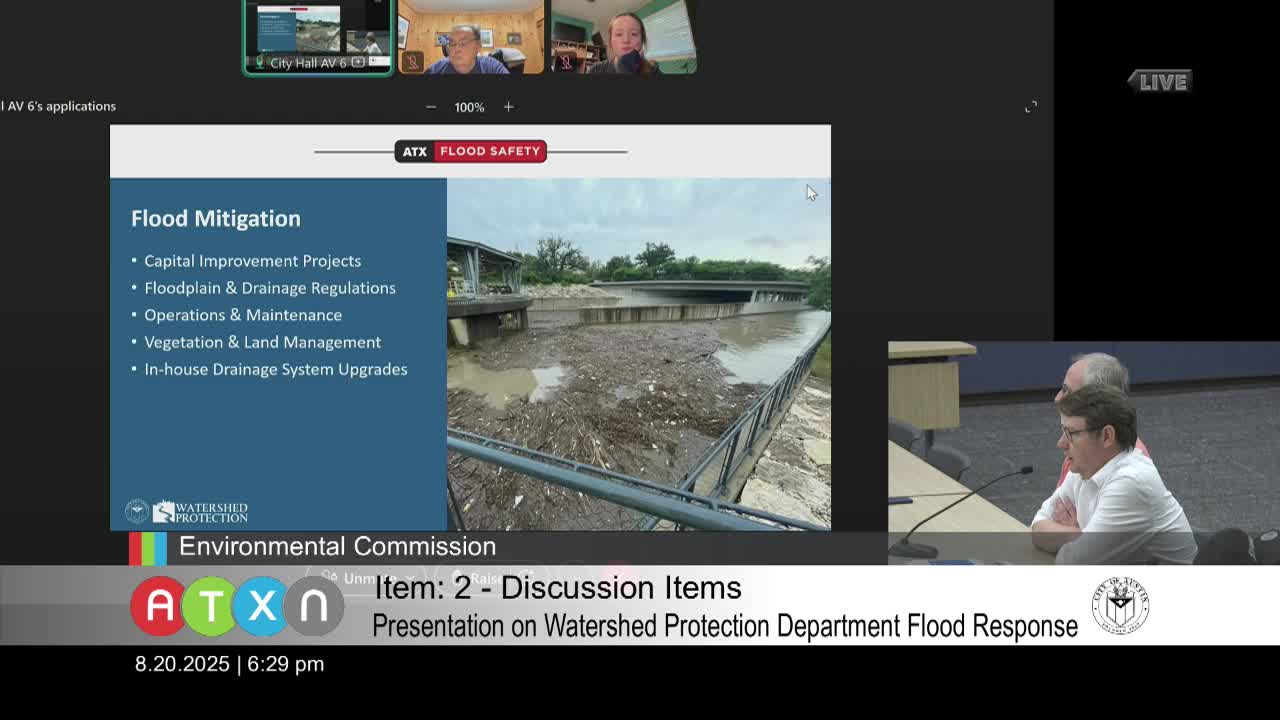City Implements Capital Improvement Projects to Mitigate Flood Risks
August 20, 2025 | Austin, Travis County, Texas
Thanks to Scribe from Workplace AI , all articles about Texas are free for you to enjoy throughout 2025!

This article was created by AI using a video recording of the meeting. It summarizes the key points discussed, but for full details and context, please refer to the video of the full meeting. Link to Full Meeting
One of the primary strategies discussed was the implementation of capital improvement projects. These multi-million dollar initiatives, designed by engineering firms and executed by private contractors, aim to bolster the city's infrastructure. A notable example mentioned was the Waterloo Inlet facility, part of the Waller Creek Tunnel project, which serves to divert floodwaters and protect 28 acres of downtown Austin. The commission emphasized that such large-scale projects, alongside smaller initiatives like storm drain improvements and the construction of flood walls, are essential tools in reducing flood risks.
In addition to these capital projects, the commission underscored the importance of proactive measures to prevent future flooding. This involves ensuring that new developments adhere to regulations that minimize their flood impact. By prioritizing these preventive strategies, the city can allocate resources more effectively and enhance overall safety.
The meeting also addressed the operational aspects of maintaining the drainage system, which comprises over 30,000 storm drain inlets and 1,100 miles of storm drains. With a dedicated team of approximately 175 employees, the city conducts regular maintenance to keep these systems clear of debris and sediment, ensuring they function as intended during heavy rainfall. The commission highlighted the importance of community engagement, encouraging residents to report issues through the city's 3-1-1 service.
Vegetation and land management were also discussed as crucial components of the drainage system's upkeep. The city manages around 1,100 acres of land, focusing on selective vegetation practices to maintain the health of ponds and channels.
In conclusion, the Environmental Commission's discussions reflect a comprehensive approach to flood risk management in Austin. By combining large-scale infrastructure projects with preventive measures and ongoing maintenance, the city aims to enhance its resilience against flooding. As these initiatives progress, the community can expect continued improvements in safety and infrastructure reliability.
Converted from Austin - Environmental Commission meeting on August 20, 2025
Link to Full Meeting
Comments
View full meeting
This article is based on a recent meeting—watch the full video and explore the complete transcript for deeper insights into the discussion.
View full meeting
